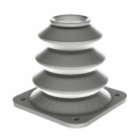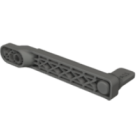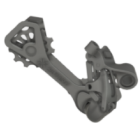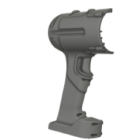What to buy with a 3D printer
Getting a 3D printer is only the beginning. While the machine is the centerpiece of your setup, it won’t function effectively without the right supporting equipment, tools, and materials. Whether you’re a first-time buyer or scaling up your additive manufacturing workflow, knowing what to buy with a 3D printer can be the difference between smooth, productive printing and frustrating trial-and-error.
3D printing isn’t plug-and-play — it’s a process that depends on preparation, maintenance, calibration, and post-processing. Your initial investment should therefore include not just the printer, but everything that supports the full lifecycle of a print job.
Essential consumables and materials
First and foremost, you’ll need the right materials for the technology you’re using. FDM printers require spools of filament — typically PLA, PETG, ABS, or more advanced engineering-grade polymers. Resin printers need UV-curable liquid resin, while powder-bed systems like SLS use thermoplastic powders such as PA12 or TPU.
You should also consider purchasing material storage solutions. Humidity is the enemy of many 3D printing materials, so airtight containers, dry boxes, or filament dryers are essential to preserve print quality and avoid waste. Keeping your materials in ideal condition extends their shelf life and ensures reliable layer adhesion during printing.
Tools for setup, maintenance, and calibration
No matter the printer type, you’ll need tools to help with setup, calibration, and upkeep. For FDM printers, this usually includes nozzle cleaning kits, leveling tools, spare nozzles, and lubrication for the motion system. Resin users should have nitrile gloves, filters, cleaning containers, and isopropyl alcohol for post-processing. SLS users need powder sieves, vacuum cleaners for powder removal, and sometimes bead blasters for finishing.
Proper calibration is essential to getting good results, especially when dealing with dimensional tolerances. A basic digital caliper helps verify part accuracy, while print surface adhesives (such as glue sticks or PEI sheets) help prevent warping on the build plate. Over time, you’ll also want a stock of replacement parts — belts, build surfaces, filters — to keep the machine running smoothly.
Workspace setup and safety considerations
Don’t underestimate the importance of your printing environment. A stable, level surface free of vibration is critical for consistent results, especially with resin or powder printers. Ventilation is also a major factor, particularly for SLA and ABS printing, where fumes can be unpleasant or harmful.
For resin or powder workflows, it’s worth setting up a dedicated post-processing area with washing and curing stations, or depowdering booths. Resin spills and fine powder particles require care and containment — having your workflow organized from the start reduces mess, contamination risk, and downtime.
If you’re operating in a shared or professional environment, consider safety accessories like carbon filters, fume extractors, and even fire suppression systems for large-scale or enclosed printers.
Must-have cleaning and post-processing items
Post-processing is often an overlooked aspect for beginners, but it’s essential for getting high-quality results. Depending on the printing method, you’ll want to keep a few key items at hand.
- FDM: flush cutters, sandpaper or a deburring tool, and a scraper for part removal.
- Resin: isopropyl alcohol, UV curing light, silicone mats, and silicone containers.
- SLS: soft brushes for depowdering, compressed air, and bead blasting cabinet (optional).
These tools aren’t just helpful — they’re required if you want to maintain part quality, repeatability, and machine hygiene.
Two most important add-ons for every user
If you’re overwhelmed by options, start by focusing on these two universally valuable purchases.
- A material storage system – such as a filament dry box or resin cabinet to protect your investment and ensure consistent print quality.
- A reliable digital caliper – essential for checking part dimensions, calibrating extrusion, and tuning tolerances.
Final thoughts
Buying a 3D printer isn’t just about the machine — it’s about building a complete ecosystem. From consumables and calibration tools to safety gear and software, every component plays a role in ensuring that your prints are successful, consistent, and cost-effective. Planning ahead and equipping yourself properly saves time, reduces frustration, and allows you to fully leverage the potential of your 3D printer from day one.
Whether you’re running a desktop FDM unit or an industrial SLS system, the smartest investment you can make is in the tools that help you get the most out of your printer — and avoid the pitfalls of being underprepared.
Explore also
- What to know before buying a 3D printer
- What is the highest quality 3D printer?
- Factors to consider when buying a 3D printer
- 3D printing comparison
- SLS vs other 3D printing methods: when to choose it
- How to future-proof your 3D printer investment
Related categories













